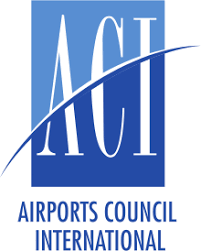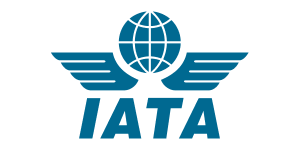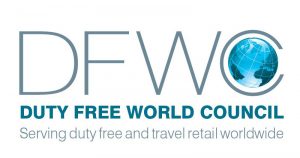A special TMI round-up compiled by Lois Pasternak
Airports and airlines in some major countries are getting ready to emerge from lockdown, even as the world reached the unimaginable milestone of 5 million confirmed cases this week. More than 328,000 people have died to date and the real number is likely much higher. The World Health Organization on Tuesday reported the largest single-day increase of infections –more than 106,000 – with about 40% of them in the United States.
In a tragic development, Latin America is now the most affected region, reported Mercopress, with the largest number of new daily cases. Brazil and Peru are the most seriously impacted countries. On Wednesday, Brazil’s Health Ministry reported 888 new deaths and nearly 20,000 new infections in a single day. According to a projection, nearly 90,000 Brazilians will die in the epidemic, but this count could be even worse as President Jair Bolsonaro is pushing supporters to go back to work. Brazil is now third in the number of cases, behind only Russia and the U.S.
Here follows a round-up of stories related to travel trying to open up:
SFO Resumes Flights to Europe in June
 San Francisco International Airport (SFO) has announced the return of nonstop air service to Europe in June 2020.
San Francisco International Airport (SFO) has announced the return of nonstop air service to Europe in June 2020.
As a result of the COVID-19 pandemic, SFO has had no flights to Europe since April 1, 2020. The Airport also expects additional service to Japan next month.
SFO reports that All Nippon Airways (ANA) plans to begin operating three flights per week to Tokyo-Narita on June 1 using Boeing 777 aircraft. ANA originally planned to operate one daily flight to Tokyo in June 2020.
Swiss International Air Lines plans to begin operating one weekly flight to Zurich on June 1 using Boeing 777 aircraft. Swiss originally planned to operate one daily flight to Zurich in June 2020.
Lufthansa plans to begin operating three flights per week to Munich on June 16. The aircraft type has yet to be determined. Lufthansa originally planned to operate one daily flight to Munich in June 2020.
Delta invests in customer assurance
![]() Delta Airlines CEO Ed Bastian, who has been doing an excellent job of communicating with customers since the crisis began, on Tuesday issued an update designed to instill confidence among passengers and staff. In it, Bastian committed to capping capacity of every flight at 60% and blocking middle seats (a concept that IATA has pushed back against as too costly.) JetBlue has also committed to keeping middle sets free.
Delta Airlines CEO Ed Bastian, who has been doing an excellent job of communicating with customers since the crisis began, on Tuesday issued an update designed to instill confidence among passengers and staff. In it, Bastian committed to capping capacity of every flight at 60% and blocking middle seats (a concept that IATA has pushed back against as too costly.) JetBlue has also committed to keeping middle sets free.
The Delta CEO also says that the air on all aircraft is completely recirculated 10 to 30 times per hour with fresh, outside air or through industrial-grade HEPA filters with similar performance to those used in hospital operating rooms, and that crew will take the time when deplaning to create distance for those ahead to exit.
Delta has also unveiled custom Plexiglas safety barriers that it says will be installed at all check-in lobbies and departure gates at Delta’s U.S. hub airports by June 1 and at all U.S. locations in the weeks following. The carrier was also one of the first to institute deep cleaning procedures.
TMI understands that Delta will resume flights to Amsterdam, Paris and Israel from JFK starting in June, as well as flights from Detroit to China and to London, and Seatac to China.
ACI & IATA issue “roadmap” for aviation restart
 On May 20, Airports Council International (ACI) World and the International Air Transport Association (IATA) jointly issued a paper laying out a pathway for restarting the aviation industry, proposing a “roadmap” for resuming operations that reassures the traveling public that health and safety remain the overall priorities.
On May 20, Airports Council International (ACI) World and the International Air Transport Association (IATA) jointly issued a paper laying out a pathway for restarting the aviation industry, proposing a “roadmap” for resuming operations that reassures the traveling public that health and safety remain the overall priorities.
The joint paper proposes a layered approach of measures across the entire passenger journey to minimize the risk of transmission of COVID-19 at airports and onboard aircraft, and to prevent aviation becoming a meaningful source of international re-infection.
 Such measures should be globally consistent and subject to continued review, improvement, and removal when no longer required, to ensure an even recovery.
Such measures should be globally consistent and subject to continued review, improvement, and removal when no longer required, to ensure an even recovery.
“There is currently no single measure that could mitigate all the risks of restarting air travel but we believe a globally-consistent, outcome-based approach represents the most effective way of balancing risk mitigation with the need to unlock economies and to enable travel,” said ACI World Director General Angela Gittens.
Europe issues guidelines
On May 21, the European Aviation Safety Agency (EASA) and the European Centre for Disease Prevention and Control (ECDC) of the COVID-19 Aviation Health Safety Protocol released guidelines for the safe restart of air transport in Europe.
Global association IATA welcomed the announcement, as did travel retail groups DFWC and ETRC, although they both voiced disappointment that inflight sales will be restricted at this time.
As IATA says: The EASA and ECDC guidelines are aligned with recommendations provided by both the airline and airport sector for a layered approach of temporary measures to protect public health while allowing viable air services to help drive the European economic recovery. But the guidelines will only be effective if all European states deliver harmonized implementation and mutually recognize each other’s efforts.
Key measures in the EASA guidelines include:
*Physical distancing at the airport and terminal infrastructure, such as with baggage drop and claim, and at security, should be optimized to prevent queuing
*The wearing of masks at all times in the airport and on board is recommended, as is appropriate personal protective equipment (PPE) to staff
*Enhanced cleaning procedures in both the airport and aircraft are recommended, especially for frequently-touched surfaces
*Where allowed by the passenger load, cabin configuration and mass and balance requirements, airlines should ensure physical distancing among
passengers. Family members and individuals traveling together as part of the same household can be seated next to each other.
In a statement accompanying the Protocol, EASA explained that the recommended measures will be regularly evaluated and updated in line with changes in knowledge of the risk of transmission as well as with development of other diagnostic or preventive measures.
DFWC: guidance signals restart in sight for duty free retailers
 Duty Free World Council President Sarah Branquinho comments on the EASA guidance (excerpted):
Duty Free World Council President Sarah Branquinho comments on the EASA guidance (excerpted):
“We are pleased to see that under the EASA guidelines duty free shops should expect to be able to trade again as airports and airlines return to normal scheduling in the second half of 2020.
“These measures are a welcome step forward that will enable travel retailers to begin rebuilding their businesses, which have been among some of the most heavily impacted in the world by the COVID-19 outbreak… the value of non-aeronautical revenue for a healthy airport sector has never been clearer, and travel retail’s essential role is apparent.
“We are disappointed that the guidelines have included a recommendation to temporarily restrict inflight sales which is not in line with our industry position. We will continue to advocate in support of the entire duty free industry and seek the lifting of this restriction.
“The Duty Free World Council is engaging with the International Civil Aviation Organisation, and organisations around the world, to work constructively and quickly to develop common standards and guidelines that will ensure the world can get back to business, and passengers back in the air.”
ETRC welcomes EU guidance to restart aviation industry
 Commenting on the announcement of the harmonized measures, Nigel Keal, President of the ETRC, said (excerpted): “… The guidance shows a clear path to reopening of travel retail and duty free shops as people return to air travel.
Commenting on the announcement of the harmonized measures, Nigel Keal, President of the ETRC, said (excerpted): “… The guidance shows a clear path to reopening of travel retail and duty free shops as people return to air travel.
“We now urge EU Member States to support this coordinated approach and work with Travel Retailers at local level to implement these high standards which allow for shops to reopen safely. This will enable European airports to generate important non-aeronautical revenues which will be key to their recovery following this sustained period of disruption.
“We advocated strongly for a resumption of all duty free services, including inflight sales, and are disappointed that this temporary restriction is proposed in the guidelines. We will continue to voice to the relevant authorities our position on this and hope this is removed soon,” said Keal.
U.S. travel industry loses more than half of workforce
 In the U.S., travel-related unemployment has hit 51% in the weeks ahead of Memorial Day, reported the U.S. Travel Association on May 19.
In the U.S., travel-related unemployment has hit 51% in the weeks ahead of Memorial Day, reported the U.S. Travel Association on May 19.
More than half of the 15.8 million travel-related jobs in the U.S. have disappeared since the outbreak of the COVID-19 pandemic—driving an unemployment number (51%) that is more than twice the 25% rate the country as a whole experienced at the worst of the Great Depression, according to data released earlier this week
Though there is evidence of pent-up demand for travel, U.S. Travel Association President and CEO Roger Dow said that the public should expect travel to look and feel different for the foreseeable future, as travel businesses embrace practices aimed at promoting the safest possible environment for their customers and employees. USTA projects that travel spending in the U.S. will tally just a third of last year’s levels—$4.2 billion this year versus $12.3 billion in 2019.









